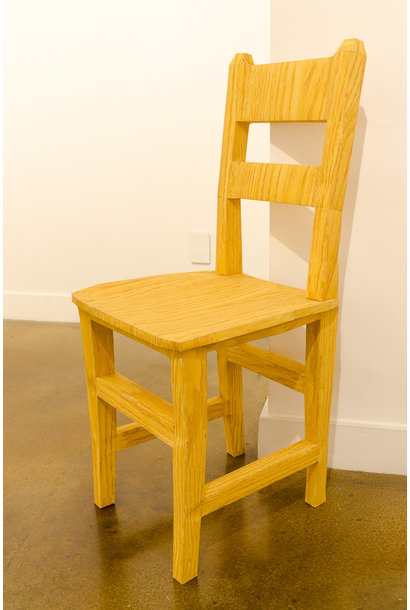

Suzie Smith “Hollow Anchor”, Suzie Smith
C$ 0.00 Excl. tax
"Smith is interested in transformation and the play between image and object, and more generally ideas of representation, uniformity, and craft. She complicates how viewers perceive an object by encouraging them to look further."
- File number: EXHI1035
...
Suzie Smith’s artistic practice involves the representation of utilitarian objects using print and sculpture. She voids these objects of their utility and relocates them within the context of art. Her work brings to light the binary concepts of useful and useless, along with other oppositional ideas, such as valuable or disposable, two-dimensional or three-dimensional, object or subject, product or process, and handmade or industrial.
Hollow Anchor consists of folded paper sculptures, often in multiples, created from either screen or inkjet printed patterns. The sculptures are realistic representations of everyday objects and create, on first glance, a trompe-l’œil, which is an art technique that uses realistic imagery to create the optical illusion that depicted objects exist in three dimensions.
In this exhibition, everyday objects, such as bricks, hammers, anchors, chairs, and hands, have been represented through print, and then subverted back into the three dimensional object that it originally represented. The sculptures, in a sense, become the representation of the object and the replication of the actual object at the same time. For instance, a chair has been constructed from screen printed images and patterns of a chair, and then folded and glued into the shape of a chair.
Considering Hollow Anchor from the perspective of ontological philosophy, interesting questions begin to emerge around the basic categories of being for an object as simple as a chair. Is a utilitarian object still a utilitarian object simply because it looks as though it is a utilitarian object, or must it perform it’s utilitarian task sufficiently in order to maintain it’s status? When does one thing become something else, and if it does, will it cease to also be the thing that it was?
Ontology is the philosophical study of the nature of being, becoming, existence, or reality, as well as the basic categories of being and their relations. It deals with questions concerning what entities exist or can be said to exist, and how such entities can be grouped. Similarities and differences between things are used to create divisions and subdivisions according to systematic criteria. It was traditionally listed as part of the major branch of philosophy known as metaphysics.
Smith is interested in transformation and the play between image and object, and more generally ideas of representation, uniformity, and craft. She complicates how viewers perceive an object by encouraging them to look further, to question what they are seeing, and to look at their surroundings in a new way. Through deconstructing and reconstructing familiar objects, she attempts to reveal a new truth, perspective, or double meaning.
While craft making and the do-it-yourself movement has been prevalent within popular culture since the 1970s, aided by the amateur circulation of cheap home recorded instructional videos, it seems to be taking on a more vital role in contemporary art. The resurgent interest in craft and the hand-made is resulting in a greater interest in older analog technologies, which produce an aesthetic that stands out amidst an increasingly industrial and synthetically saturated society. Smith could have implemented three dimensional printing technology to produce similar work; however, Hollow Anchor uses more hands-on techniques of folding paper to create editions and multiples where the difference and imperfections between the component parts is highlighted.
The work in Hollow Anchor is about the process of making just as much as it is about the object. In speaking with the artist, Smith considers herself primarily a print-based artist. She is attracted to printmaking because of the structure and restrictions that the medium provides. It gives her the opportunity to play against existing traditions, subvert intentions, and rebel against formal aesthetics, materials, and techniques.
Smith is intrigued by the labour intensive nature of printmaking, the contradiction of multiplicity and originality, whereby an individual multiple will always retain some of its own unique properties, reflecting the inherent flaw (or beauty) of the printmaking process. Printmaking, for her, falls between the realms of precious and mundane and her work plays with this dichotomy.
Curated by Justin Muir
Suzie Smith is a print based artist from Winnipeg, Canada. She graduated with a Bachelor of Fine Arts Degree from Concordia University in 2004 and a Master of Fine Arts from The Glasgow School of Art in 2011. She has shown nationally and internationally and has had solo exhibitions at Atelier Circulaire (Montreal), Open Studio (Toronto) and Ace Art (Winnipeg).
Recently viewed
-
 Favoriten
Add to cart
Favoriten
Add to cart
Suzie Smith “Hollow Anchor”, Suzie Smith
C$ 0.00 Excl. tax












